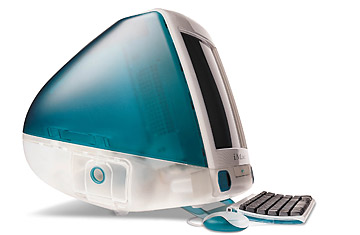
The iMac, introduced in 1998, had two characteristics that quickly made it the best-selling personal computer in America. First, it was a self-contained unit that required minimal setup and even had a handle that made it easy to pull out of the box and move around. The elimination of the tangle of device cords that typically powered and connected the computer and monitor made the iMac attractive to users who didn't know much about computers. (According to Apple, one-third of iMac sales in the machine's first year went to first-time computer buyers.) Second, the iMac was pretty. On the shelves next to the beige computers that dominated the market back then, the teal iMac, with its cutecircular mouse and translucent body, stood out. Less than a year after Steve Jobs unveiled the iMac, he introduced a second generation that came in fivebright colors that a New York Times reporter wrote "more closely resemble a pack of Life Savers than a new computer line." A week after the candy-colored new iMacs became available, Apple announced its most recent quarterly earnings were three times what they had been the year before.